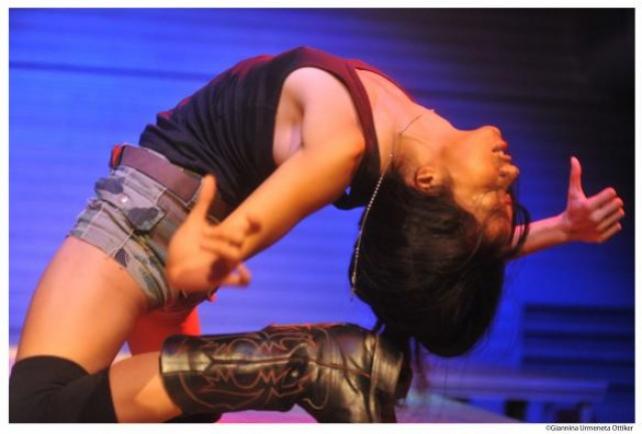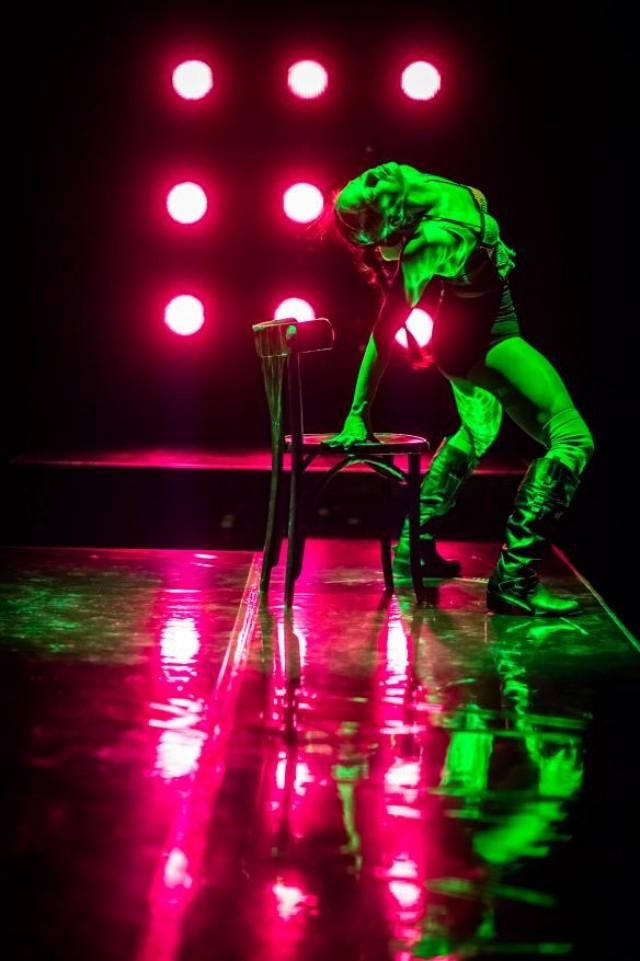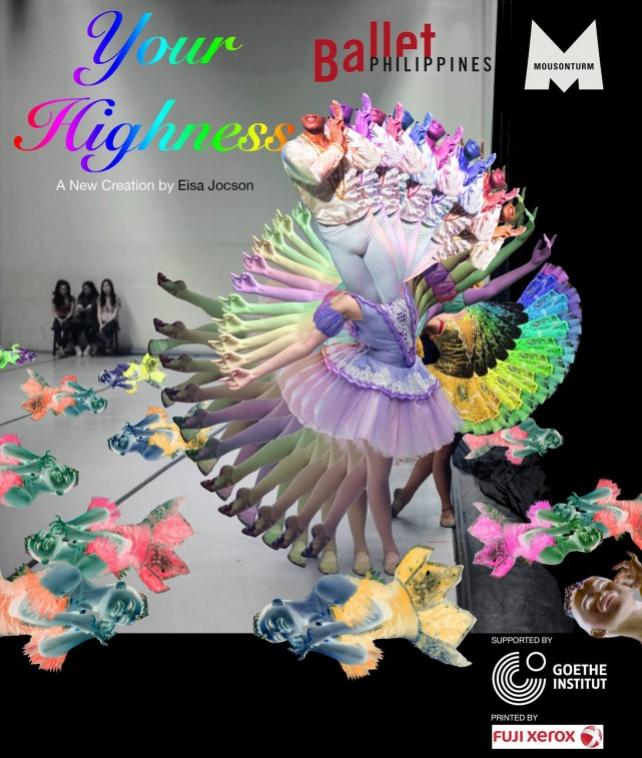Meet Eisa Jocson, collaborator of Ballet Philippines for ‘Your Highness’, the woman who made art out of macho dancing
No one would expect a background of classical ballet training to lead to global fame of macho dancing for the theater stage, yet this is how performance artist Eisa Jocson’s artistic journey plays out.
_2017_07_27_18_50_46.jpg)
Starting off as a ballet dancer, Jocson was a student at the Philippine High School for the Arts, majoring not in ballet but in visual arts. She said that visual arts offered more avenues for expression to her than ballet did. Besides, she had an aunt, a visual artist herself, who was a major influence on her career path – in more ways than one.
Red Light Vs. Spotlight
“When I was in college, I stumbled on pole dancing because of my aunt.
She was one of the first batch of women trying out pole dancing. It was back [in 2008, 2009] when poledancing wasn’t popular at all. “
“It was somehow perfect as a movement discipline, even as a community discipline. It really catapulted me into a different community of women, because most of the women trying it out were more mature… They were mothers and business women, women who were secure and solid with themselves… It created this sisterhood, kind of solidarity with women.”
Jocson shares that this maturity in the misunderstood art form allowed her to view it differently. “A lot of people would have judgments about it. The judgment was still rooted in the stigma of pole dancing in the red light district… But the function and the economic meaning has changed. Before we were performing it to men, as labor, and now, you’re performing it for yourself… After several years, it’s normalized. It’s so common. It’s no big deal at all.”
Other than pole dancing being a stable source of income for Jocson for some time, her artistic background also trained her to see something else in the movement. “I felt that there was a huge potential for discourse, because there’s this dissonance by how it’s being practiced by a certain group of people and how it’s being perceived outside… It’s a gold mine to make work around.”
This gold mine inspired Jocson to create several pieces centered on pole dancing, appropriating the dance form in public spaces, such as "Stainless Borders" (2010), "Death of the Pole Dancer" (2011), and "Up" (2012). This curiosity and interest in differing social perceptions also eventually led Jocson to yet another social taboo.
Flexing Some Muscles

After making a name for herself as a pole dancer, Jocson wanted to challenge herself yet again and do something entirely different. Approached by a performing arts festival in Berlin, Jocson centered on theme of spectatorship and turned her sights on another red light district phenomemon: macho dancing.
“It took me a year to transform. I really went to the clubs, I did research. I asked the macho dancers to teach me how to macho dance… In the beginning, they wouldn’t take me seriously, but [after a while], they were like, ‘Okay, this girl really just wants to learn it.’”
With training in ballet and pole, two extremes in feminine movement and choreography, Jocson wanted to challenge the idea of gender formation, especially her own. "Macho Dancer" (2013) received critical acclaim from various international organizations. Jocson was even featured as a macho dancer on the 2016 music video of “How You Like My Cut” from hiphop artist Peaches.
Despite the sensuality surrounding the movement, Jocson is more introspective on her macho dancing experience. “I suddenly realized how ungrounded my body was… I realized how I didn’t have a sense of balance on my own.” She shares how her training in pole meant that she wasn’t used to standing on her own. “It took me a year to find my ground. You’re always leaning against [the pole] or away from it… You learn to ground yourself. I had to unlearn a lot of my social habits and understand how my body is placed, because it’s a different placement.”
After "Macho Dancer", Jocson then went back to the idea of femininity. Intrigued by the lives of the japayukis, she spent some time in Japan to come up with the movement studies for "Host" (2015). From the twirling of the signature Oriental parasols to the most recognizable dances in Japanese pop songs, Jocson explored how the Filipino body, through the Pinay entertainers in Japan, takes in culture through body language and movement.
“They are negotiating their Filipino identity in this Japanese context that they’re in. So, they had to be malleable enough to work with the context and shift their identity towards that, but not completely to change it. So, I was interested in this body that hosts both culture.”

The Pursuit of Happiness
Jocson’s most recent pieces continue her work on the femininity, albeit in another form. The "HappyLand" series focuses on happiness as a performance, particularly by Filipino laborers.
"Princess" (2017), a duo with fellow performance artist Russ Ligtas performed in Frankfurt, “hijacked” the idea of the fair-skinned princess, placing her ironically in a Filipina body.
Jocson’s latest pursuit of "HappyLand", "Your Highness", takes the princess ideal or non-ideal a step further.
“[It’s about the] narrative ideologies that this princess archetype propagates. The ideology of the first love, this romantic idea… This desire for a romantic privileged situation that is constantly being fed. You see this in different iterations in popular culture. It’s really big money. This innate need has been capitalized on… You become fillers for these ideal pictures, even in the industry of happiness, like Disneyland.”
In order to present the living and breathing epitome of a princess, Jocson turned to her ballet roots, the physicality of which embodies the grace and beauty of Disney royalty. For "Your Highness", Jocson partnered with Ballet Philippines, selecting dancers who carefully worked on the piece with Jocson for several months.

“There has to be a certain adeptness in order to do something with it,” Jocson says, referring to the picture perfect ballet technique. The production is a distorted presentation of the typical classical ballet, as the dancers chant the dance steps they live and breathe day in and day out. As the dancers execute pirouettes and arabesques, loud shouts and funny noises are heard, creating a disjoint in the audience’s visual and aural perceptions, while words are repeated over and over again like a broken record.
“It’s in this bending [or breaking] that there could be a potential for something else to come out. In one way, that is what is being explored in Your Highness, the in-between transitions from one system into another system.”
Jocson shares that another layer in this work are the stories of the talents that go abroad in pursuit of happiness. “My research into the Filipino migratory body, [brings me] a little bit closer to my peers, because it’s people I know who have worked here as dancers and are now either in cruise ships or in Hong Kong Disneyland. I’m interested in the conditions that made it possible for us to, why we easily fit into that labor industry. It’s not just because of financial constraints, it’s also because of our embodied history…. It’s this capacity to copy, to mimic.”
It is these contemporary socio-economic issues that Jocson believes the body inevitably absorbs as we go through our daily lives.
“The body is a repository of all this meaning. It just consciously or subsconsciously descends. Naiipon sa katawan mo." — LA, GMA News
Your Highness premieres at the CCP’s Tanghalang Aurelio Tolentino on July27 Thursday (8:00pm) and Jul 28 Friday (3:00pm & 8:00pm). The production then flies to Germany and Switzerland for its European Tour.
For tickets, call Ballet Philippines at +632 5511003, the CCP Box Office at +632 8323704, or Ticketworld at +632 8919999.




